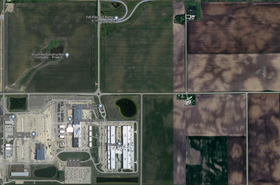The US National Science Foundation (NSF) will invest $457 million to build a new Leadership-Class Computing Facility (LCCF) facility at The University of Texas, Austin.
Set to become operational in 2026, the facility will be situated at the university’s Texas Advanced Computing Center (TACC) and will house Horizon, a half-exaflops supercomputer.
According to the University of Texas, when operational, Horizon will become the largest academic supercomputer in the NSF portfolio, dedicated to open-scientific research. It will provide a 10x simulation performance improvement and a 100x increase in AI performance over Frontera, the TACC’s current leading supercomputer.
First deployed in 2019, the 23.52 petaflops Frontera was ranked 33 on the latest edition of the Top500 list of the world’s fastest supercomputers, a significant drop from the fifth place it was awarded in its first year of operation.
The investment from the NSF will also allow the facility to receive a number of software and service upgrades to enable it to be opened up to scientists across the US.
The funding comes from the $11.3bn assigned to the NSF by the US government in March 2023, specifically earmarked “to support science and engineering research that requires the largest and most computationally intensive capabilities research infrastructure.”
“LCCF represents a pivotal step forward in our mission to support transformative research across all fields of science and engineering,” said NSF director, Sethuraman Panchanathan. “This facility will provide the computational resources necessary to address some of the most pressing challenges of our time, enabling researchers to push the boundaries of what is possible.”
In addition to Frontera, the TACC is also home to the Stallion supercomputer and the Lonestar6 cluster which was deployed in 2021. The company recently announced plans for a new Nvidia-based cluster, dubbed Vista.







